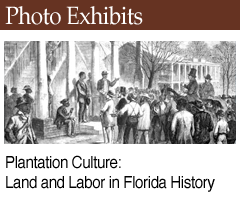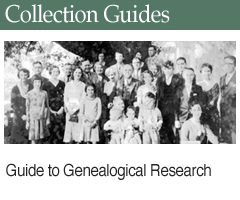1855 Census Returns: Marion County
About These Documents
This collection contains the returns of the 1855 Florida State Census for Marion County. The census takers recorded data for each household in the county, listing the head of household along with the value of land and other property owned by that person. Both free and enslaved members of the household are counted, but are not named individually. They are, however, broken down by age, sex and race. Space is provided on the returns for free blacks, although only one such individual is recorded as having lived in Marion County in 1855.
The Marion County returns are the only original returns known to exist for this census. The Secretary of State’s post-census report to the Governor provides tabulated totals from other counties, although the documents from which these calculations were made have been lost. Tables from this report are provided on the Statewide Census Totals page. Together, the Marion County returns and the statewide totals from the Secretary’s report provide a useful snapshot of Florida’s population in the late antebellum period.
Background
Florida’s first constitution called for a census to be conducted throughout the state in 1845 and once every ten years thereafter. The primary purpose was to establish a basis for the representation of each county in the Legislature. Unlike the United States Census, this one was managed at the state level by the Florida Department of State.
On January 13, 1855, Governor James E. Broome signed an act establishing a procedure for the census. The law directed the Governor to appoint someone in each county to conduct the count using books furnished by the Secretary of State. If the Governor could not find a suitable person, or if the person(s) he selected declined to do the work, the tax assessor/collector of the county was to do the job.
Census takers were directed by law to visit each dwelling in the county and record information for all of the columns given in the return books. The Act authorized the government to pay the census taker five cents per person counted for the first thousand persons, and three cents for each person from there to three thousand, whereupon the price per head dropped to two cents. For counties having fewer than 500 inhabitants, the bounty was ten cents per person. These were hearty rewards for 1855, but the law also added provisions to punish negligence in performing the census. Any census taker neglecting his duty would be guilty of a misdemeanor, and would be subject to the same penalties as a person convicted of perjury.
Although Marion County’s returns are the only originals to survive, 30 of Florida’s 31 counties at the time appear to have submitted census results. The Secretary of State submitted a report to Governor Broome with these totals on November 21, 1855. That report is available in the appendix of the journal of proceedings for the Florida House of Representatives, 1855 session, and its tables are provided on the Statewide Census Totals.

 Listen: The Latin Program
Listen: The Latin Program




